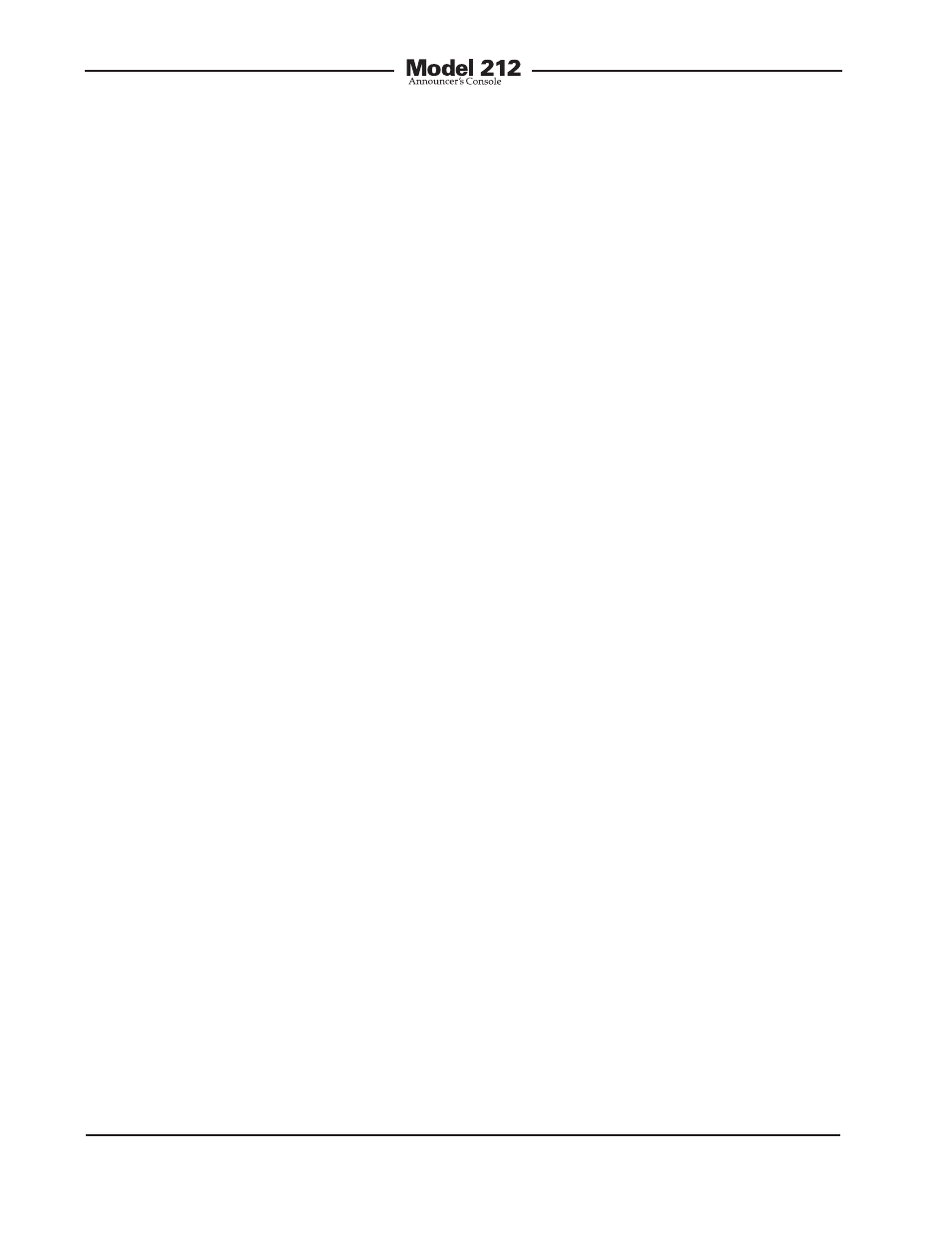Studio Technologies 212 2006 User Manual
Page 31

Model 212 User Guide
Issue 3, July 2006
Studio Technologies, Inc.
Page 31
panel. For reference, the wire color for pin
1 is gray, pin 2 is yellow, and pin 3 is blue.
The heat-shrinkable tubing is provided so
that connector solder cups can be insu-
lated from each other. It will also provide
some strain relief to the solder joints. Be
certain to slip the desired length of tubing
over the wire prior to soldering a connec-
tion! (If the writer had a dollar for every
time he forgot to put tubing on a wire—or
slip on a connector shell—before making
a solder connection…)
The Model 212’s enclosure must be disas-
sembled prior to installing connectors in
the spare locations. Four hex-head ma-
chine screws, two on the bottom front of
the enclosure and two on the back panel,
must be removed. A 5/64-inch hex driver
is required. The cover can then be care-
fully separated from the chassis, remain-
ing attached by means of a flexible cable
assembly. This “flex-cable” assembly links
the main printed circuit board assembly
with the board assembly that contains the
pushbuttons and LED indicators. Ensure
that the flex cable is not damaged while
the Model 212 is being customized. For
easier access, the pushbutton/LED board
assembly can also be easily removed.
The 3-position headers on the Model
212’s main circuit board assembly are
generally located close to their related
input or output connectors. The following
list provides the printed circuit board refer-
ence numbers and associated functions:
P1: AES3id input, pin 1 floating, pin 2
signal, pin 3 shield.
P2: Bidirectional Digital Interface, pin 1
floating, pin 2 signal, pin 3 shield.
P3: External 24 volt DC input, pin 1
common, pin 2 +24 volts, pin 3 not used.
Note: header P10 is used by the back-
panel 24 Vdc jack assembly and is electri-
cally in parallel with P3.
P4: Headphone output, pin 1 common,
pin 2 left (tip), pin 3 right (ring).
P5: Microphone input, pin 1 shield, pin 2
high, pin 3 low. Note: follows back-panel
3-pin female XLR pin assignment.
P7: AES3id output, pin 1 floating, pin 2
signal, pin 3 shield.
Additional functions can be accessed
using these 3-position headers:
P6: Auxiliary relay contact B, pin 1 normal-
ly closed, pin 2 common, pin 3 normally
open.
P8: AES3 output, pin 1 common, pin 2
high, pin 3 low.
P9: AES3 input, pin 1 common, pin 2 high,
pin 3 low.
P11: Auxiliary relay contact A, pin 1
normally closed, pin 2 common, pin 3
normally open.
P12: Auxiliary input 2, pin 1 common,
pin 2 unbalanced analog audio, –10 dBu
nominal, pin 3 not used.
P13: Analog mic output, pin 1 common,
pin 2 unbalanced analog audio, –15 dBu
nominal, pin 3 not used.
P14: Auxiliary input 2, pin 1 common,
pin 2 unbalanced analog audio, –10 dBu
nominal, pin 3 not used.
P15: Pushbutton backlighting, pin 1
common, pin 2 button lamps, pin 3 current
limited 24 volts from external 24 volt DC
input.
